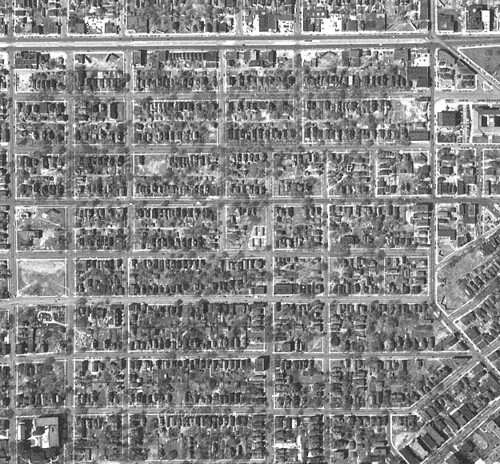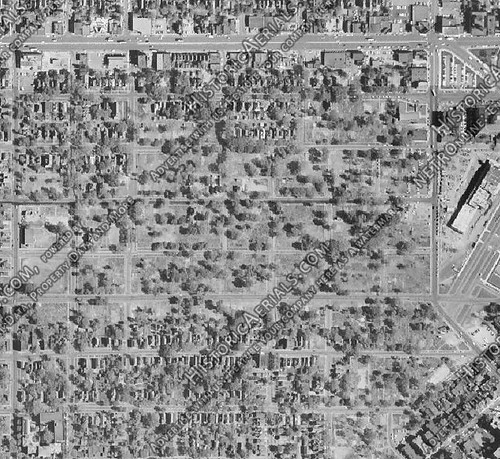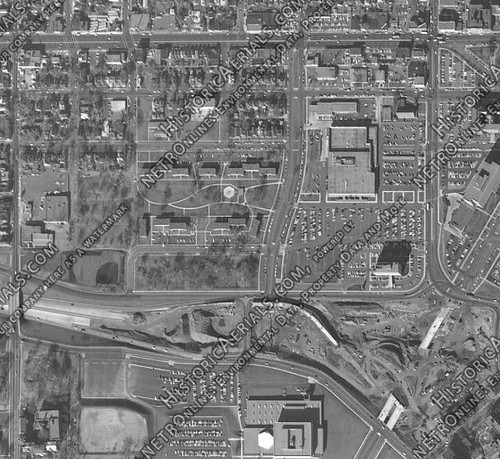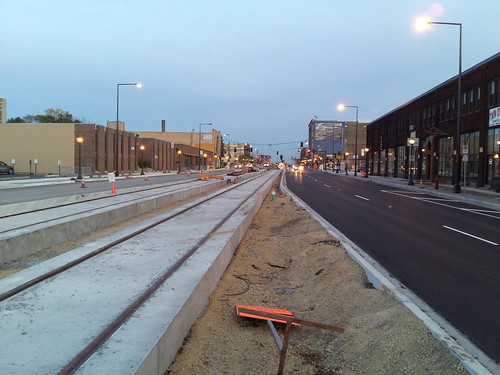 The roundabout at Bailey Road and Radio Drive in Woodbury.
The roundabout at Bailey Road and Radio Drive in Woodbury.
When I first came across this image of a roundabout with dedicated tunnels for bikes and pedestrians, I thought I had somehow wandered onto
David Hembrow's blog about cycling in the Netherlands, but no, it turns out this is an image of an American roundabout. A Minnesotan roundabout. A
Woodburian roundabout.
A roundabout in Woodbury? With two lanes, bike paths, and tunnels? Yep.
A few weeks ago,
Mike Spack linked to an
online presentation by Joe Gustafson of Washington County Public Works that covered the project. It's the first fully two-lane roundabout in the state, so the county used it to experiment a bit and collected extra data about its performance—hence the reason for the presentation.
However, the main thing that jumped at me was the roundabout's location: It's at the intersection of Radio Drive and Bailey Road. You might remember Bailey Road from news stories earlier this year about Gordon Bailey Elementary School. It became a
cause célèbre for Minnesota urbanists after it was reported that of the 620 students,
none of them walked or rode bicycles to school.
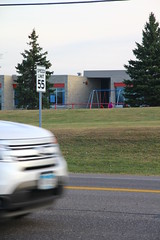 A 55-mph speed limit at an elementary school?
A 55-mph speed limit at an elementary school?
Now, I don't want to sound like a ratchety old fart talking about walking in eight-foot snowdrifts uphill both ways, but I did grow up in the southeastern Minnesota town of Byron, where kids within the city limits were (at the time) required to make their own way to and from school—whether it was by walking, biking, or getting a ride from a family member. I mostly walked, but did ride my bike or get rides on occasion. One of the main roads to my elementary school had a speed limit of
15 miles per hour, while others were normally 30 but restricted to 20 mph when students were present.
Because I grew up with a school on a slow street, I'm always amazed to see schools such as Bailey placed next to 55-mph suburban arterials. Unfortunately, it has been a common practice in the United States for the past few decades.
Roads such as this can be deadly for students. For me, this reality came into stark relief when I was in high school—a student in nearby Kasson was killed crossing the 40-mph Mantorville Avenue (Minnesota State Highway 57) near that city's high school. He was hit fast enough to be lifted out of his shoes—the mental image of empty sneakers marking a crash victim's last footsteps is something that always sticks with me.
 Gordon Bailey Elementary's main entrance to the west side parking lot.
Gordon Bailey Elementary's main entrance to the west side parking lot.
Due to my own experiences, I'm inclined to think that parents and kids feel unsafe crossing Bailey Road, and that's why every student gets driven or bused to school. In the original reporting on the subject, parents gave a variety of reasons for driving their children, but the school's location still sticks out like a sore thumb.
So, how do you make this road—out on the edge of the urban boundary—feel safe? Ideally, I'd like to see schools located in town centers, like the elementary I grew up with. Built up near the edge of streets that are designed to be slow, even if the slow area only lasts a block or so.
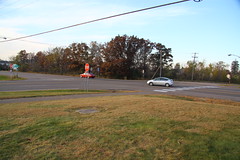 The school's closest intersection, a 4-way stop at Bailey Road and Woodlane Drive.
The school's closest intersection, a 4-way stop at Bailey Road and Woodlane Drive.
But here, we're dealing with an established facility that's on roads that are made for high speed. Reducing the speed limit might help, but a road lined on one side by farmland is unlikely to be driven slowly. Wide open spaces encourage wide open throttles, so a reduced speed limit would likely be ignored.
In this case, it seems the best option is to completely separate pedestrian traffic from the road, allowing people to get from one side to the other without having to wait for cars to pass or stop.
Tunnels or bridges across the road are the way to accomplish that. Expensive solutions, but worth the money because they will save lives. Certainly criticism would follow any such proposals, but critics should also recognize that they are usually remedies to problems that never should have existed in the first place. Unwalkable locations bring latent costs with them, and building special grade-separated walkways just makes those hidden costs visible.
Schools should be built in walkable places, period. They are engines of community, and should be treated as such.
